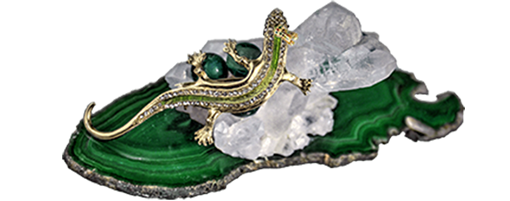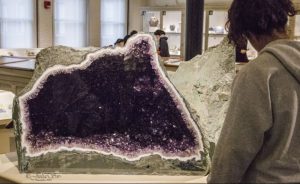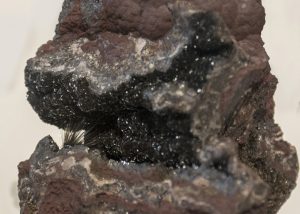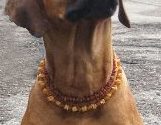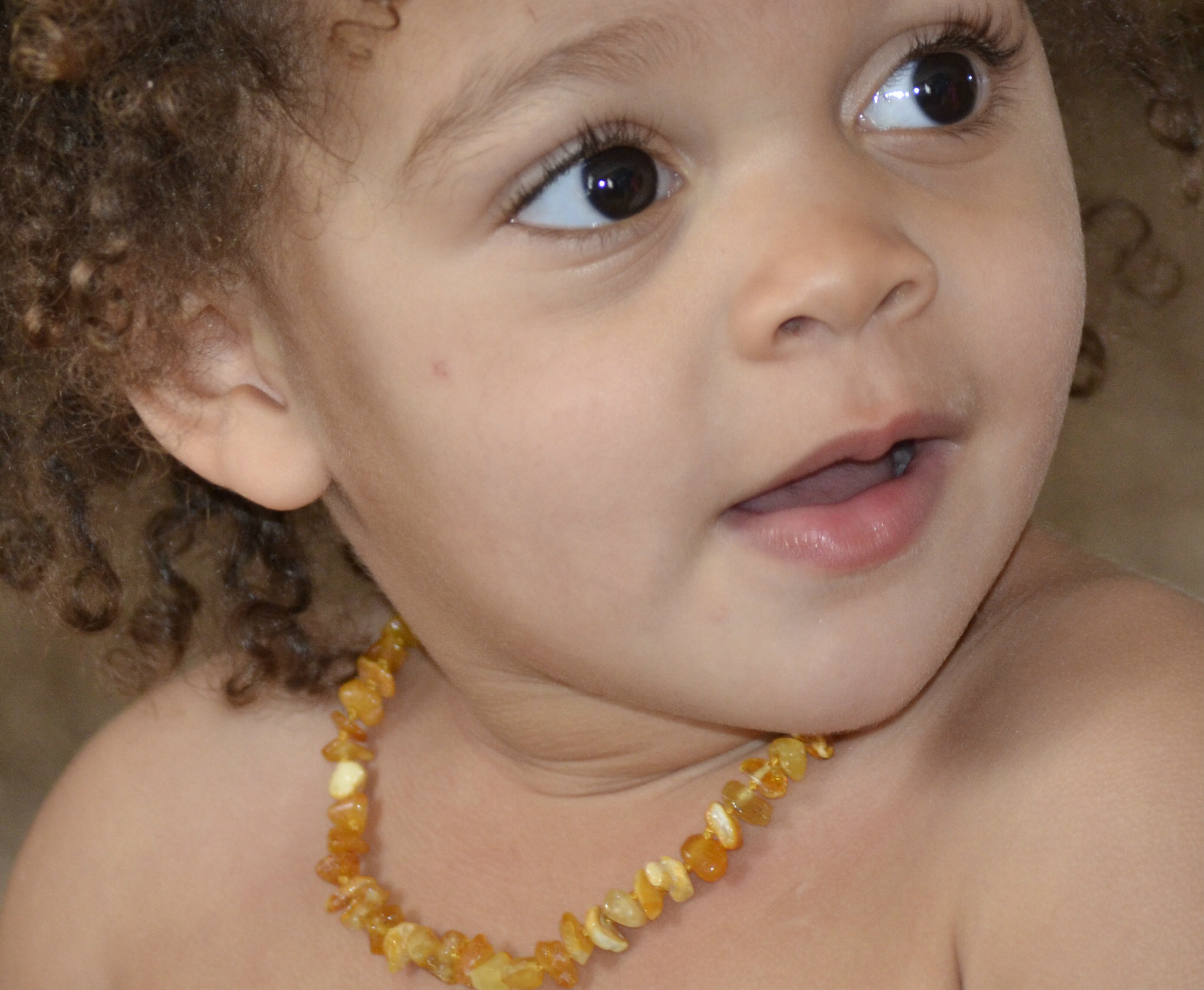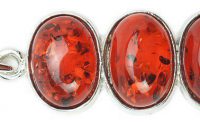Rocks and Minerals in the Harvard Museum of Natural History – Fun for Kids and Adults
The Earth & Planetary Sciences Gallery
It was raining on Sunday morning. My options were to stay in bed or go to the Harvard Museum of Natural History. In the past, I’d rather stay in bed, but since I became my own boss and stopped working regular business hours in an employer’s office, I chose to get up and go see the minerals’ collection in the Earth & Planetary Sciences Gallery. I am going to share this experience and my emotions with you, and illustrate them with the photos I’ve taken at the exhibition.
Affordability is not an issue for all whose curiosity and hunger to self-education are not deficient.
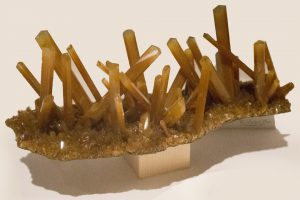
Minerals are mysterious and fascinating. Crystals form such incredible shapes and come in an enormous variety of colors. Is there time for mystery, beauty, poetry in our fast-paced, practical and technological world? I wasn’t sure whether many people are interested nowadays in rocks and minerals, if there are many parents, who would introduce mineralogy to their kids, or how many people even know where gemstones come from and what they look like before they become a central piece or an embellishment in a jewelry item.
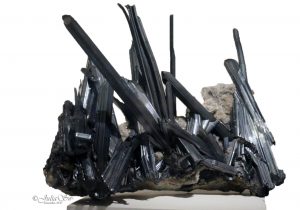
There are somewhere around 1,000 exhibits in the Earth & Planetary Sciences Gallery. The specimens come from all around the world. I was pleasantly surprised to see many young adults and families with kids at the exhibition. I also learned that the Museum offers free admission to Massachusetts residents year-around on Sundays from 9:00 am to 12:00 pm. September through May, locals can also visit free of charge on Wednesdays from 3:00 pm to 5:00 pm.
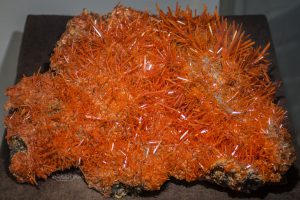
The place was crowded! I am sure that the rain helped to bring more people in, and yet I find it awesome that all these families came to the Museum of the Natural History rather than stayed home at a TV or a computer.
A quiz for the adults (because it’s too easy for your children!)
Children’s laughter was heard in the hall and their voices were calling out for parents, siblings, and friends:
“Emma, Emma, look at this rock. It grows hair!!!”
1. What is this rock in the picture that grows hair?
The mineral that looks like it’s growing a tuft of hair is called Millerite. It has fine crystals that tend to grow in radiating masses and furry aggregates. It lines the crater of the famed Mt. Vesuvius in Italy, and can often be found in meteorites.
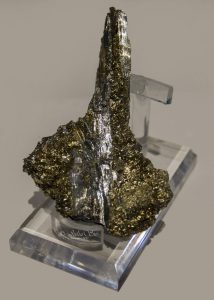
“Mom, come here! Look: this stone looks like a pointing finger.”
2. Look at this picture. Do you know what this mineral is and what this finger is pointing at?
Bismuthinite is an ore for bismuth, the active ingredient in Pepto-Bismol. Since it’s not as toxic as most heavy metals, it commonly replaces lead in products like paint, batteries, and gasoline. And of course, it’s pointing at its importance in our everyday life.
 A 7 or 8 years old clever boy in a bewilderment was sharing with his father the information, which he just read on a board: “Dad, this rock fell on Earth from out of space!”
A 7 or 8 years old clever boy in a bewilderment was sharing with his father the information, which he just read on a board: “Dad, this rock fell on Earth from out of space!”
There was a beautiful spotted alien on the display. It was indeed a polished piece of a meteorite.
3. Do you know the difference between meteorite and meteor?
That boy knows now. Okay, I’ll tell you too… To be a meteorite, a space rock must survive its journey through the atmosphere to reach Earth’s surface. Most of them are from the asteroids, but a few originate from other planetary bodies such as Mars or the Moon.
A meteor is the streak of light produced when a very small fragment of extraterrestrial material burns up before reaching Earth’s surface. Meteor showers occur when Earth’s orbit moves through a cloud of dust and debris left behind by a comet.
Yes!!! These rocks are mysterious, enchanting, and they sure are fun to watch and learn about!
An Imaginary World with a Secret Garden and its Spirit.
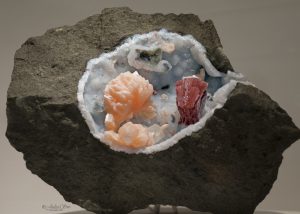 I came to visit the still garden of the Mistress of the Copper Mountain… well, in her American residence. I am fascinated by the rocks and metallic minerals’ so much that I could spend hours and hours watching their bizarre shapes and an unbelievable variety of colors. They truly come alive in my eyes.
I came to visit the still garden of the Mistress of the Copper Mountain… well, in her American residence. I am fascinated by the rocks and metallic minerals’ so much that I could spend hours and hours watching their bizarre shapes and an unbelievable variety of colors. They truly come alive in my eyes.
I picture a Malachite girl running in her gorgeous garden and planting the stones in the carefully prepared beds, mixing and matching colors, tastefully selecting the shape and size in her arrangements.
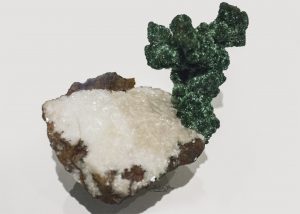
If a stranger comes with an interest to her garden, love and appreciation for her creation, she becomes a proud Queen graciously demonstrating her magnificent grounds. If she finds an artist in her visitor, she turns into a flirty and cheerful Hostess. She bewitches her guest and enswathes his mind and heart in her adhesive nets – so, that the visitor never forgets her and her jewels.
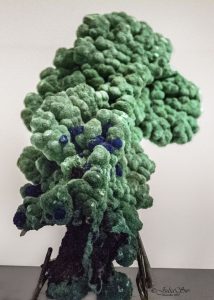
If a stranger comes with a threat to her and her garden, she becomes a powerful and demanding Goddess – Mother Earth herself, who treasures and protects her wealth. The one with impure intentions better stays away from her grounds.
Call her any of these names, and you won’t be wrong – she is a collective image of all of these characters.
I wonder if mineralogists see the minerals’ as Nature’s art, or it’s a pure chemistry science for them. I knew couple geologists, and they were very romantic individuals. I’d like to think that most people of this occupation are.
What do you see in this imaginary still garden of the Mother Earth? Isn’t it a well-arranged flower bed in the first image? What do you see in this Malachite from the Ural Mountains, Russia? I believe it’s a giant snail with a green head. Or, maybe it’s an oasis with an exotic tropical tree over a pond? The next picture is definitely an evergreen tree, wouldn’t you agree? It’s a magic tree: I see it walking with a cane or even crutches. And in my view, the last two images captured stone vegetable beds of this Wonderland.
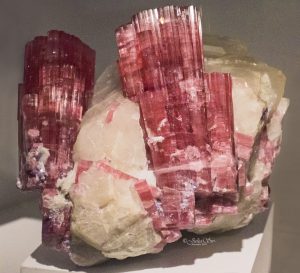
In my perception, the diversity of the minerals’ and their fabulous appearance opens up to an imaginary world and evokes poetic images. I know that I am not alone in such vision, and seeing so many visitors in the rocks and minerals exhibition and their joy and excitement made me feel understood and among like-minded people.
You landed on my page and read this article to the end. This means that you and I have a common interest; we probably are also like-minded. Leave me a message in the comment field below, share your views, let’s chat. I’d be happy to hear from you, and will definitely get back. I promise. And please come visit me again, because I am working on this website daily, and publish new articles weekly. I was inspired to see many children and their enthusiasm at the exhibition. I decided to dedicate a section of this website just for them.
~ Julia
